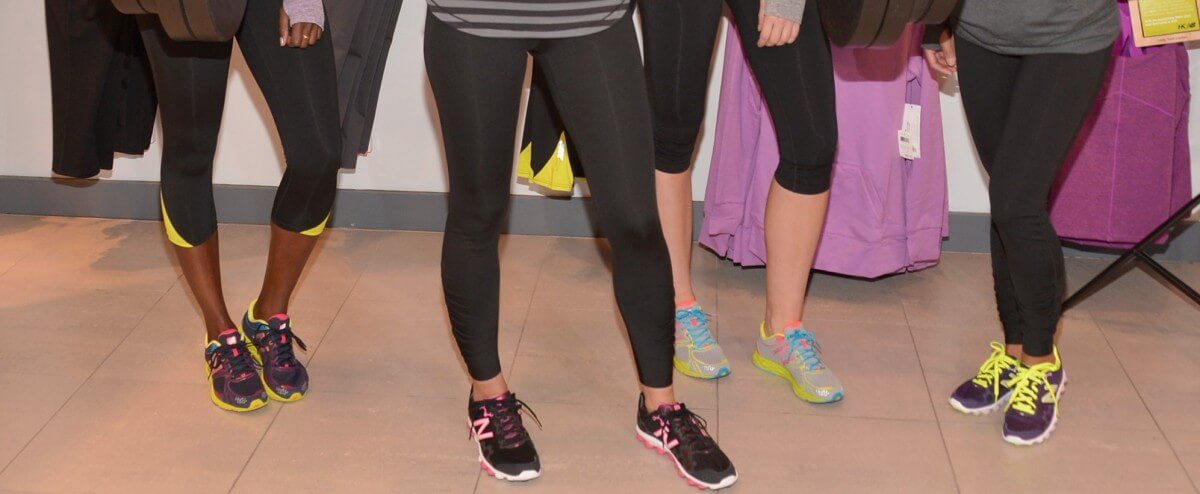
Should leggings be considered problematic college attire?
One mother of four sons believes so, deeming it a problem that female students are wearing these “unforgiving” garments with “short-waisted tops”, Maryann White lamented in a letter to University of Notre Dame’s newspaper, The Observer. It was a “painful” issue for her, a Catholic mother, considering it a challenge “to teach [her] sons that women are someone’s daughters and sisters” when they women “voluntarily expose their nether regions”.
“I didn’t want to see them — but they were unavoidable. How much more difficult for young guys to ignore them,” she continued
“I’m fretting both because of unsavory guys who are looking at you creepily and nice guys who are doing everything to avoid looking at you.”
Choose jeans instead, she suggested, instead of leggings which are “so naked, so form fitting, so exposing”.

Source: AFP/Mladen Altonov
There has been many reactions to this lecture-cum-letter.
Vanessa Friedman, New York Times’s Chief Fashion Critic sees the backlash as a “highly visual” sign of “upending norms to make way for the next [generation]”.
Author Suzanne Venker sees it as female students “sexualising themselves”, citing research that shows college-aged men are “aroused two or three times a day on average” and usually by visual means.
In the Washington Post style reporter Monica Hesse wants to start a public debate that goes beyond being angry about the letter or the leggings. Instead, it should be about “bad patterns that are so entrenched” that White could only address them “in the only broken, feeble way you can imagine — by asking younger women to stop having visible butts”.
Another useful perspective to add to this is how leggings fit into dress codes at schools and colleges today.
There is no shortage of other women’s garments that allegedly offend dress codes in educational institutions. A sundress on a five-year-old was deemed too exposed by a school in the US state of Houston.
Spaghetti strap tank tops, singlets, shorts, miniskirts and slippers are not allowed at Malaysia’s UCSI University.
A sports bra worn without a shirt while practising cross-country was thought as distracting by a football coach at Rowan University in New Jersey.
A loose shirt worn without a bra due to sunburn making wearing too painful warranted a school dean to instruct a female student to wear an undershirt and put bandages over her nipples.
[hybrid_insta url=’www.instagram.com/p/Bvl3fIBH-NF/’]
Among these run common themes: the wearer usually makes their fashion choices with no such intention to distract or disrupt other students – practicality and comfort are more important. But that’s not how school authorities view the issues. The ‘violating’ clothes are said to be distracting, unsafe for the wearer and mostly worn by women. Indeed, more than half of US public schools have dress codes and consider them a “safety and security measure”.
The problem is these codes appears more focused on sex stereotypes than safety. They can be counter-productive. In the case of Lizzy Martinez, the high schooler told to bandage her nipples, this fell under messaging that target female students inequitably, according to Meredith Harbach, a University of Richmond law professor whose 2016 paper explored sexualisation and public school dress codes.
It “deflects any and all conversation about appropriate mutually respectful behavior in schools between boys and girls”, she explained.
Perhaps the silver lining to emerge from these cases lies in the backlash from students. Inspired to end discrimination, young women are taking to social media and starting petitions. Change.org reportedly has over 500 dress code petitions in their database.
Galen Sherwin, senior staff attorney at the Women’s Rights Project of the American Civil Liberties Union, told The New York Times it’s unclear why more students are speaking up. It could be more discrimination by school dress codes or a more empowered cohort. Either way, they are part of a bigger movement nationwide:
“This is part of the sea change we’re seeing nationwide in speaking up and challenging discriminatory treatment based on sex in all different areas of life.”
Liked this? Then you’ll love…
Why more American schools are implementing school uniforms
50% of US students use education loans to pay for clothes, phones, vacations







